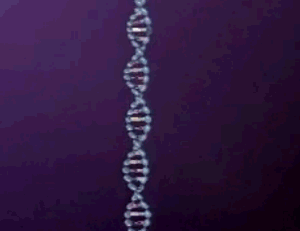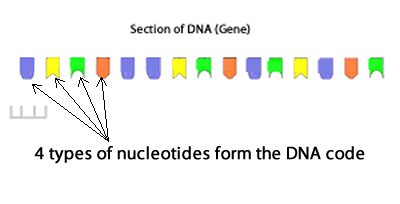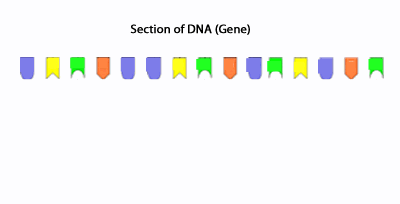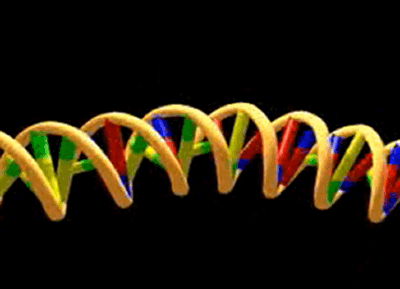The DNA code is faithfully replicated during cell division and during the process of transcription. It is this code that determines what the cell will do and when it will do it. The genetic code is translated into proteins. It is through proteins that the genetic code determines cellular function. Sometimes, however, this process makes errors and causes changes to the genetic code of a cell. Often these errors are quickly repaired by the cell, but when they are not, they become permanent changes in the genome of the cell and are known as mutations.

Mutations may be small, such as the changing of a single nucleotide, or large involving huge segments of DNA within a chromosome breaking off and rearranging.
For example a huge part of a chromosome can be deleted or simply rearranged. In other instances duplicate chromosomes may fail to separate during cell division and this could cause genetic disorders such as Down's Syndrome.
Lets look at a simple point mutation and its effects on the translation of a protein. The image on the right shows the translation of a gene. Notice how the nucleotides are read three at a time and code for a particular amino acid.

Now consider a change of one nucleotide, as shown on the right. You will notice that only one amino acid is changed in the sequence. This change is known as a substitution mutation and may not be sufficient to alter the function of the protein. Insertions of extra nucleotides, known as insertion mutation, however, can severely alter the sequence of amino acids and hence structure of the protein.
It is the shape of the protein that often determines its function and the shape of the protein is determined by the sequence of amino acids. The sequence of amino acids influences how the protein will fold and hence the final shape it will take.
Explain what will happen if a nucleotide was deleted, as happens in deletion mutations, from the sequence of nucleotides within a gene?
Why is a change of one nucleotide not as critical to the functioning of the protein as is a deletion or insertion of a nucleotide?


There are three types of mutations, neutral, deleterious and beneficial.
Neutral mutations are non-lethal and make no difference to the organism's ability to survive and reproduce in its environment. Such mutations accumulate in the gene pool and give rise to genetic variation within a population. An example of a neutral mutation is the gene that codes for colour in a particular species of stick insect, as shown on the left.
Beneficial mutations give rise to changes that increase the chance of the organism to survive and reproduce or in some way pass its genetic material to the next generation.
Deleterious mutations cause the death of the organism or in some way make it less likely that the genetic material will be passed on to the next generation.

View the video on the right.
How do mutations come about?
The genetic code is made up of how many letters representing chemical subunits of the DNA?
Each word in the genetic code is letters long and codes for
In the genetic language which of the following would be analogous to a gene.
What does the sequence of genetic words in the DNA code determine?
What is a substitution mutation?
When does a substitution mutation occur?
What are deletion and insertion mutations?
What is a germ cell?
What usually results when mutations occur in non-germ cells?
For a mutation to be passed on to the next generation it must occur where?
Investigate the diseases cystic fibrosis, thalassemia and sickle cell anaemia.
i) What is the genetic mutation that has occurred in each disease?
ii) What are the symptoms of each disease?